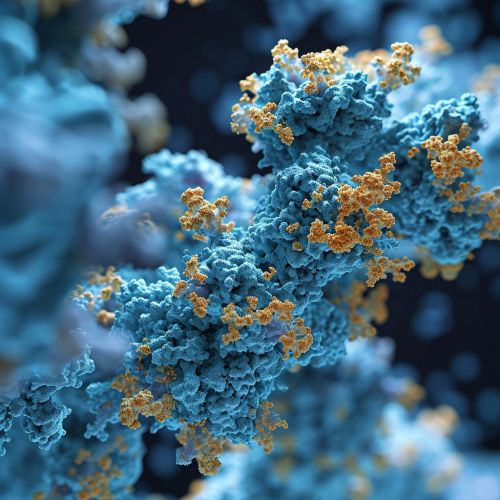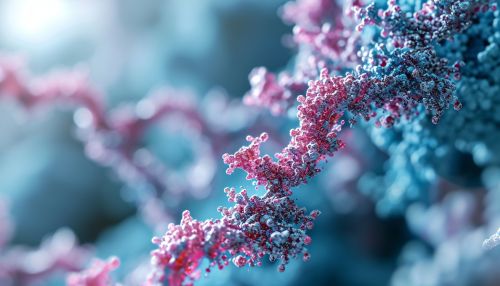HAT1
Overview
Histone Acetyltransferase 1 (HAT1) is a histone acetyltransferase enzyme that plays a crucial role in the regulation of gene expression within eukaryotic cells. This enzyme, encoded by the HAT1 gene, is involved in the acetylation of histone proteins, a process that is integral to the regulation of DNA transcription and replication.


Function
HAT1 is primarily responsible for the acetylation of histone proteins, specifically histone H4. This post-translational modification involves the addition of an acetyl group to the lysine residues of the histone protein, which results in the neutralization of the positive charge of the lysine residue. This change in charge can alter the interaction between the histone and the negatively charged DNA, allowing for changes in the structure of the chromatin and thus influencing gene expression.
Structure
The HAT1 enzyme is a member of the GNAT (Gcn5-related N-acetyltransferase) superfamily of proteins. It is composed of two subunits: HAT1 and HAT2. The HAT1 subunit contains the catalytic domain responsible for the acetylation activity, while the HAT2 subunit is believed to assist in substrate recognition and binding.
Role in Disease
Alterations in the function of HAT1 have been implicated in a number of diseases, including cancer. Abnormal histone acetylation patterns, potentially caused by mutations in the HAT1 gene or changes in the enzyme's activity, can lead to dysregulated gene expression and contribute to the development and progression of disease.
Research
Research into HAT1 has provided valuable insights into the mechanisms of gene regulation and the role of histone acetylation in disease. Continued study of this enzyme and its functions could lead to the development of novel therapeutic strategies for diseases associated with dysregulated gene expression.
